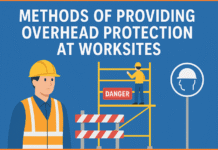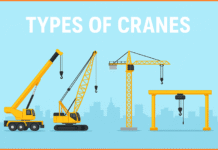Process safety and risk management
Purpose- to develop an awareness of how to achieve process safety excellence, manage risk and comply with the regulation.
Contents
Safety principle
- Safety line management responsibility.
- All injuries can be prevented.
- Felt concern and care for the workers on “24 hours safety” shall be demonstrated by leaders.
- The employee shall be trained to work safely.
- Working safely shall be the condition of employment.
- Every job shall be assessed for the risk involved and shall be carried out as per authorized procedures/ checklist/ necessary work permits and using the necessary personal protective equipment.
Four key steps:
- Establishing a safety culture
- Providing management leadership and commitment
- Implementing a comprehensive PSRM
- Achieving operating excellence through operational discipline.
Management leadership and commitment of Process safety and risk management:

- Establishing the safety culture
- Establishing PSRM policies/ guidelines.
- Committing resources.
- Involving employees.
- Establishing clear accountability.
- Auditing for the degree of compliance.
- Personally participating in PSRM activities.
Key elements of Process safety and risk management:
Concept:- application of management controls to operations involving hazardous materials in a way that process hazards are identified, understood and controlled so that process-related injuries and incidences can be eliminated.
TECHNOLOGY- FACILITIES-PERSONELL
TECHNOLOGY
1.Process safety information:
- Hazards of materials
- Process design basis
- Equipment design basis.
TECHNOLOGY
2.Process hazards analysis
- Hazards identification.
- Consequences analysis.
- Hazard evaluation.
- Human factors and facility siting evaluation.
- Inherent safer process evaluation.
Development of recommendations.
3.operating procedures and safe practices.
- Development & documented for each process.
- Consistent with process safety information.
- Comprehensive safety, health, and environment control.
- Address all process steps and phases.
- List standard operating conditions for each step.
- List raw material and other substances critical to the safety of the process.
- Describe instruments control.
- Safe conduct of operating and maintenance activities.
- Apply to both site and contract employees.
- Readily accessible to all concerned.
4.Management of technology change
- The document authorized changes.
- Document trial results.
- Establish the tracking system to ensure closure.
FACILITIES
5.Quality assurance
- Design bases and criteria documented and communicated to contractors and operating/maintenance personnel.
- Written quality control procedures addressing fabrication.
- Appropriate checks and inspection to ensure that critical equipment is fabricated and installed consistent with the design specification.
6.Prestart-Up safety reviews.
- Performed on new or modified facilities.
- Conducted by a multidisciplined team.
- Confirms- construction, PHA recommendations, procedures and training.
- Ensure test and inspections are complete.
- Develop an appropriate checklist.
- Assign responsibility for execution and follow up.
- Confirm that facility is safe to start-up.
7.Mechanical integrity.
- Establishes written maintenance procedures.
- Train mechanical personnel.
- Establishes quality control methods for maintenance materials, spare parts and equipment.
- Ensure ongoing reliability analysis is conducted for critical equipment.
- Establishes a predictive/preventive maintenance programs.
- Uses consultants to ensure mechanical integrity.
8.Management of subtle change.
- Understanding what constitutes a change.
- Written procedures for management of subtle changes.
- Review and authorization.
- PSRM requirements established up front and completed prior to implementation.
- Operating procedures are modified and personnel trained.
- Follow-up system to ensure all PSRM elements are completed before implementation.
PERSONNEL
9.Training and performance.
- Initial training.
- Refresher training.
- Training program.
- Performance of personnel.
10.Contractors
- Contract selection.
- Clear communication.
- Inform contractors process hazards, safety rules, procedures, and practices.
- Explain emergency response and control plan
- Maintain- injury, incidences etc.
- Periodic evaluation by field audits.
11.Incident investigation
- Prevent reluctance
- Share finding with others
- Identify related problems
- Identify weaknesses in safety systems
- Guide development of the standard.
12.Management of personnel change.
- Develop guidelines for maintaining minimum levels of experience and knowledge in the process groups.
Train newly assigned personnel in:-
-principle and features of process safety
-PSI for their process areas.
- Review the proficiency of new personnel following training.
- Provide additional measures if losses of experiences and knowledge occur beyond local control.
13.Emergency planning And response.
- Conduct consequence analysis.
- Develop plan to mitigate potential consequences.
- Conduct training/ periodic drills involving response teams.
- Define persons or position responsible for implementation and coordination.
- Mitigation of impact, prompt control and compliance with regulations.
14.Auditing
- All elements of PSRM programs periodically audited.
- The frequency of audits established and followed.
- Line organization from top to bottom provides the heart of auditing.
- Audits out sideline done by safety professionals, site and/or corporate process safety groups.
- Checklist used and documents evaluated.
- The result of the audit documented and feedback obtained.
Achieved operational excellence
- Leadership by example.
- Insufficient resources to support safety programs.
- Employee improvement.
- Active lines of communication.
- Strong teamwork.
- Shared values.
- Up-to-date documentation.
- Practice consistent with procedures.
- The absence of shortcuts.
- Excellent housekeeping.
- Pride in the organization.
Conclusion
In order to improve OHS performance, it is important that top management focus safety through felt commitment, visible at shop floor & amp Review its performance ( proactive and reactive parameters) periodically.





